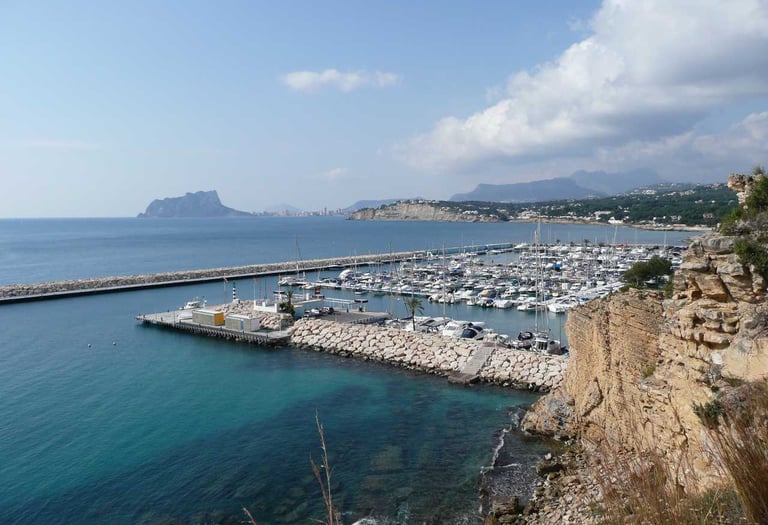

MORAIRA: originally a small fishing village within the municipality of Teulada, has grown into a holiday and retirement resort within the last 30 years. The village centre, with its small and colourful Main Street, still retains much of the original character and atmosphere. The Local Authority has exerted strong planning control and prevented the over-development and hotel building, characteristic of other Spanish coastal resorts. The terrain, sloping gently from the coast into the pine clad foothills, provides views of the coastline uncluttered with high-rise buildings.
The geographical features provide an almost perfect location as the valley, which descends down to Moraira beach, is the meeting point of several mountain streams which continue to run out to sea, along the side of the beach itself, even during the hottest and driest August weather. Over the millennium these water courses have deposited their rich alluvial soil on the valley bottom which, thanks again to the foresight of the Local Authority, has been designated as Green Belt.
The surrounding hills provide both shelter from the harsh winter weather from the north and a natural vortex for cooling summer sea breezes and Moraira's perfect orientation provides the majority of its properties with a southerly downhill view towards the sea.
The development in the area is almost wholly of detached villas and the typically Spanish "pueblo-style" developments, with few holiday apartments and no 'holiday package' hotels whatsoever. Nearly all of the properties are owned by Northern Europeans, either as retirement or holiday homes. This dictates to some extent the type of holiday maker found in the resort - those attracted here tending to be, in the main, family units since the accommodation available is virtually limited to privately owned villas.
The well spaced individual character of development does mean that the villas are spread over quite a substantial area and a car is a necessity in most areas.